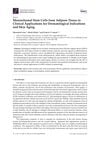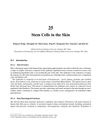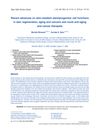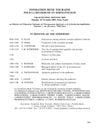Editors' Picks
August 2017
in “
Journal of Investigative Dermatology
”
activin transforming growth factor ß skin wounds skin cancers T cell populations macrophage behavior tumorigenesis skin-resident regulatory T cells Tregs hair follicle regeneration hair follicle stem cells Gata6 stem cell state wound healing commensal bacteria antimicrobial peptides Staphylococcus aureus atopic dermatitis TGF-ß T cells regulatory T cells stem cells S. aureus
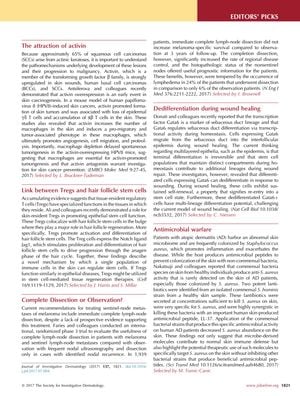
TLDR Activin increases skin tumor formation, skin Tregs help hair growth, lymph-node removal doesn't improve melanoma survival, cells can revert to stem cells in wound healing, and skin bacteria produce peptides that may treat infections.
In a selection of research highlights, Antsiferova and colleagues found that activin, a member of the transforming growth factor ß family, is upregulated in skin wounds and skin cancers, and its overexpression in a mouse model led to increased skin tumor formation, changes in T cell populations, and macrophage behavior that promoted tumorigenesis. Ali and colleagues discovered that skin-resident regulatory T cells (Tregs) play a crucial role in hair follicle regeneration by promoting the activation and differentiation of hair follicle stem cells. Faries and colleagues conducted a study with 1,939 patients and found that immediate complete lymph-node dissection for melanoma with sentinel lymph-node metastases did not improve melanoma-specific survival at 3 years compared to observation, although it did provide better regional disease control and prognostic information at the cost of a higher rate of lymphedema. Donati and colleagues reported that differentiated cells expressing the transcription factor Gata6 can dedifferentiate and re-enter a stem cell state during wound healing, challenging the current understanding of wound repair. Lastly, Nakatsuji and colleagues demonstrated that commensal bacteria on healthy skin produce antimicrobial peptides that can kill Staphylococcus aureus, which is often found on the skin of patients with atopic dermatitis, suggesting a potential therapeutic use for these molecules in treating skin infections.
